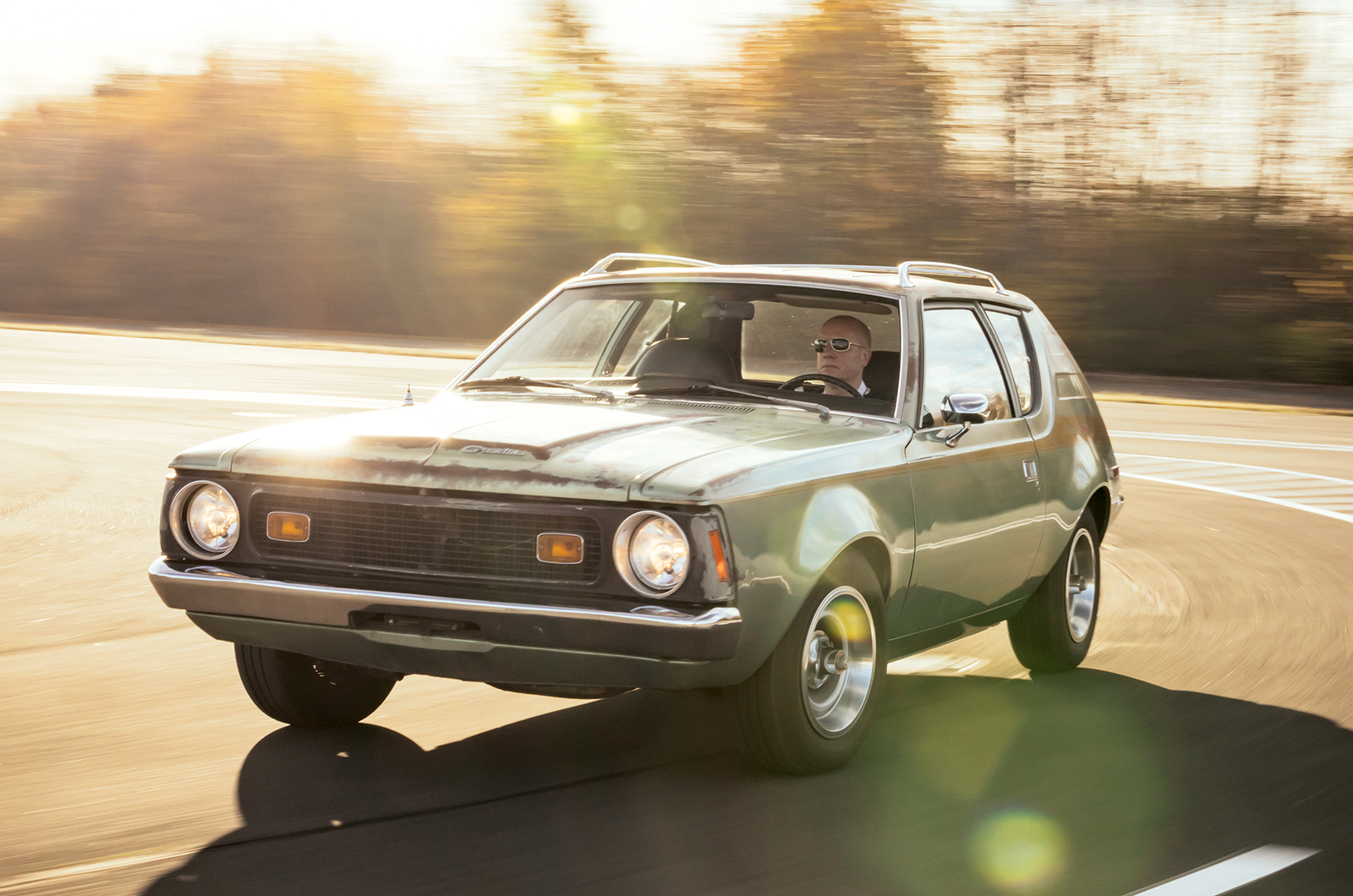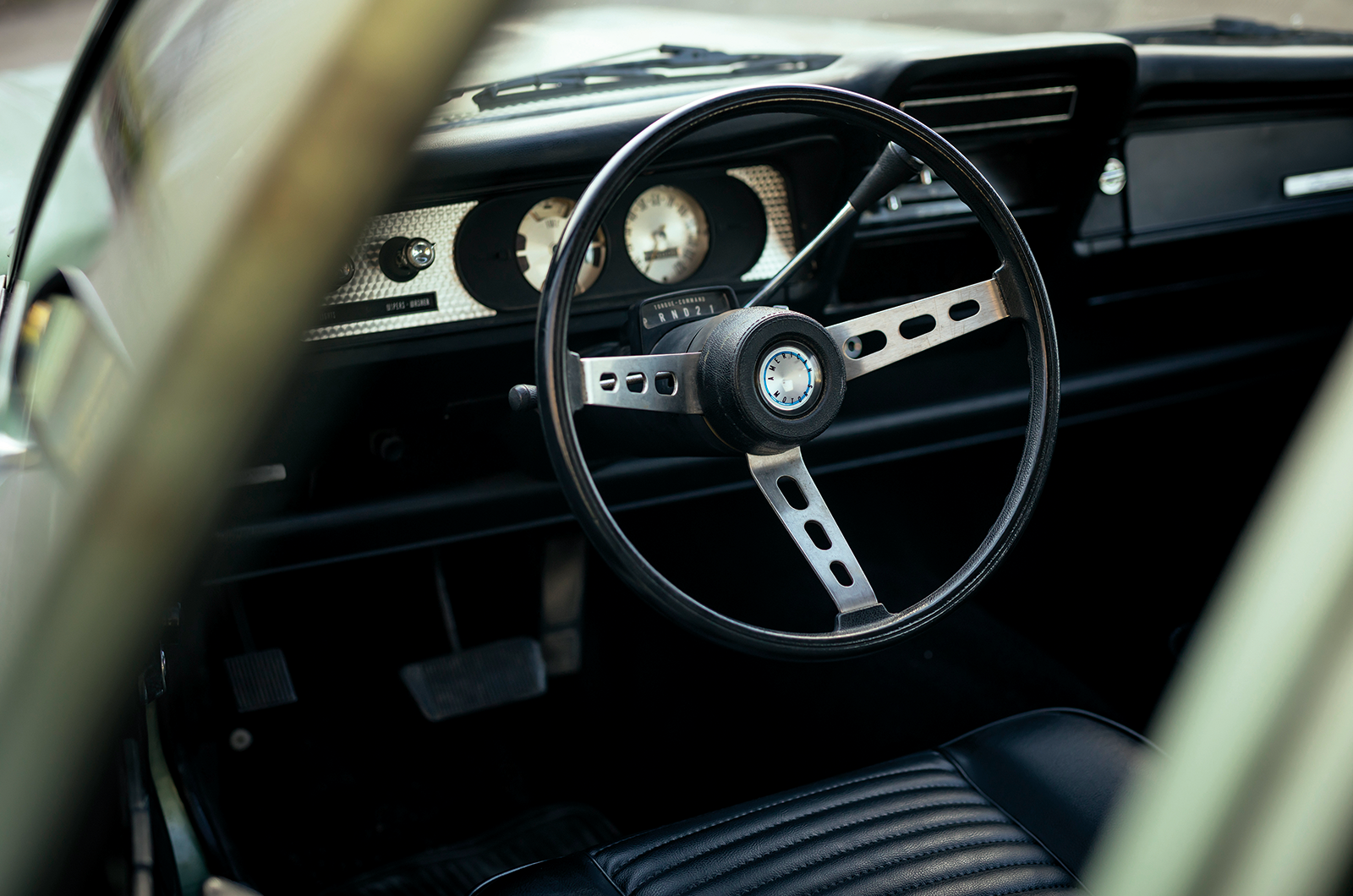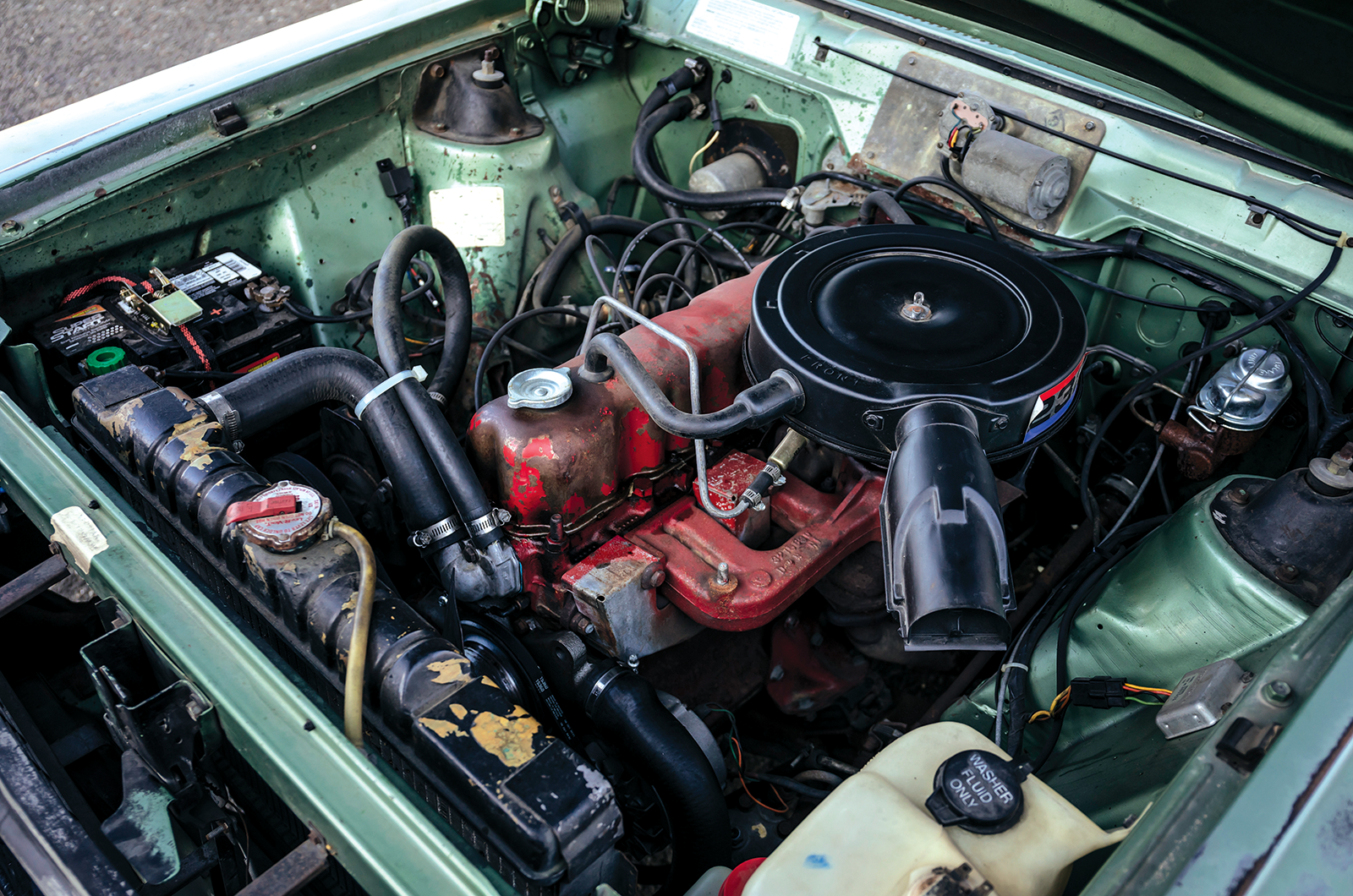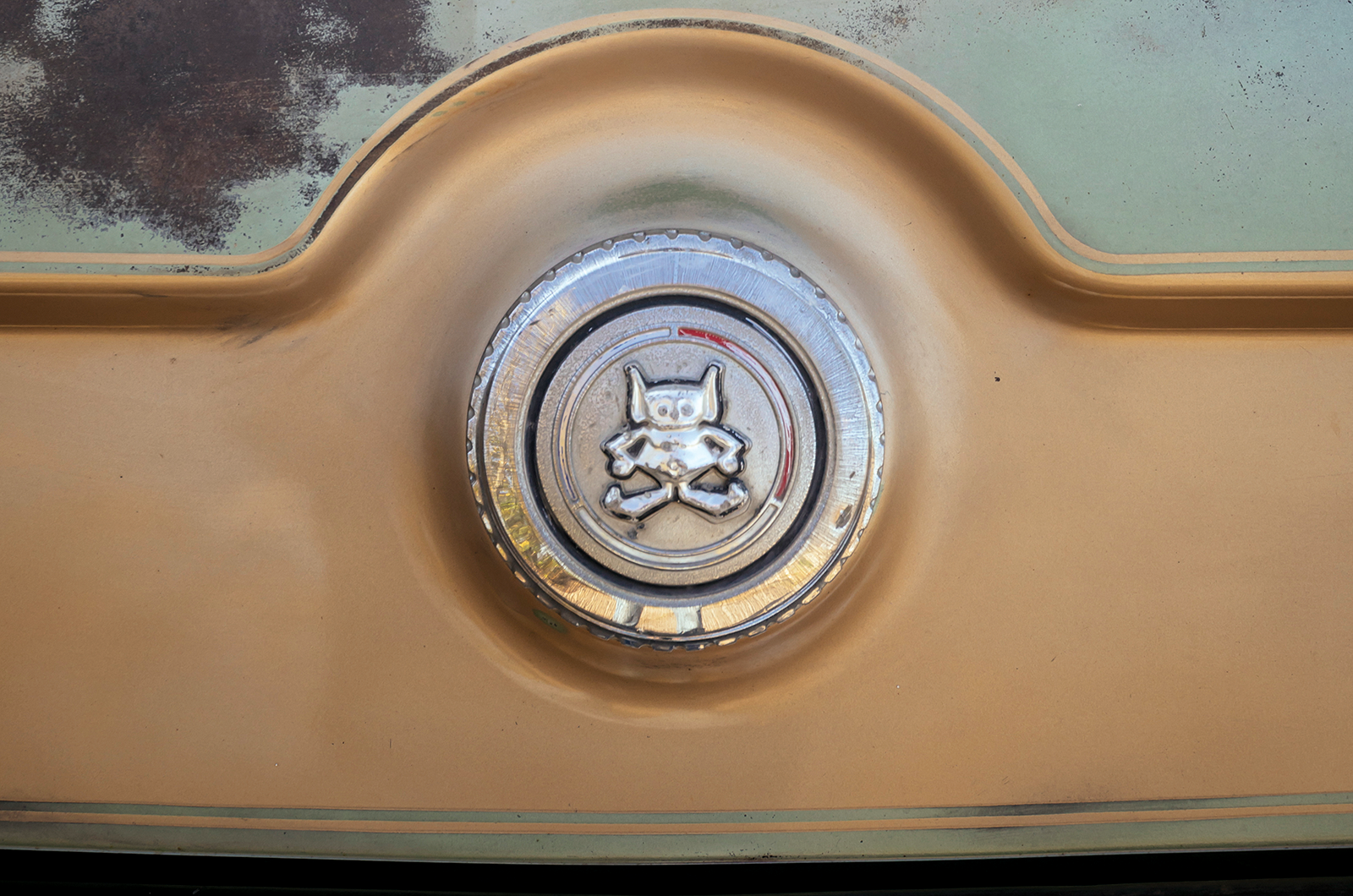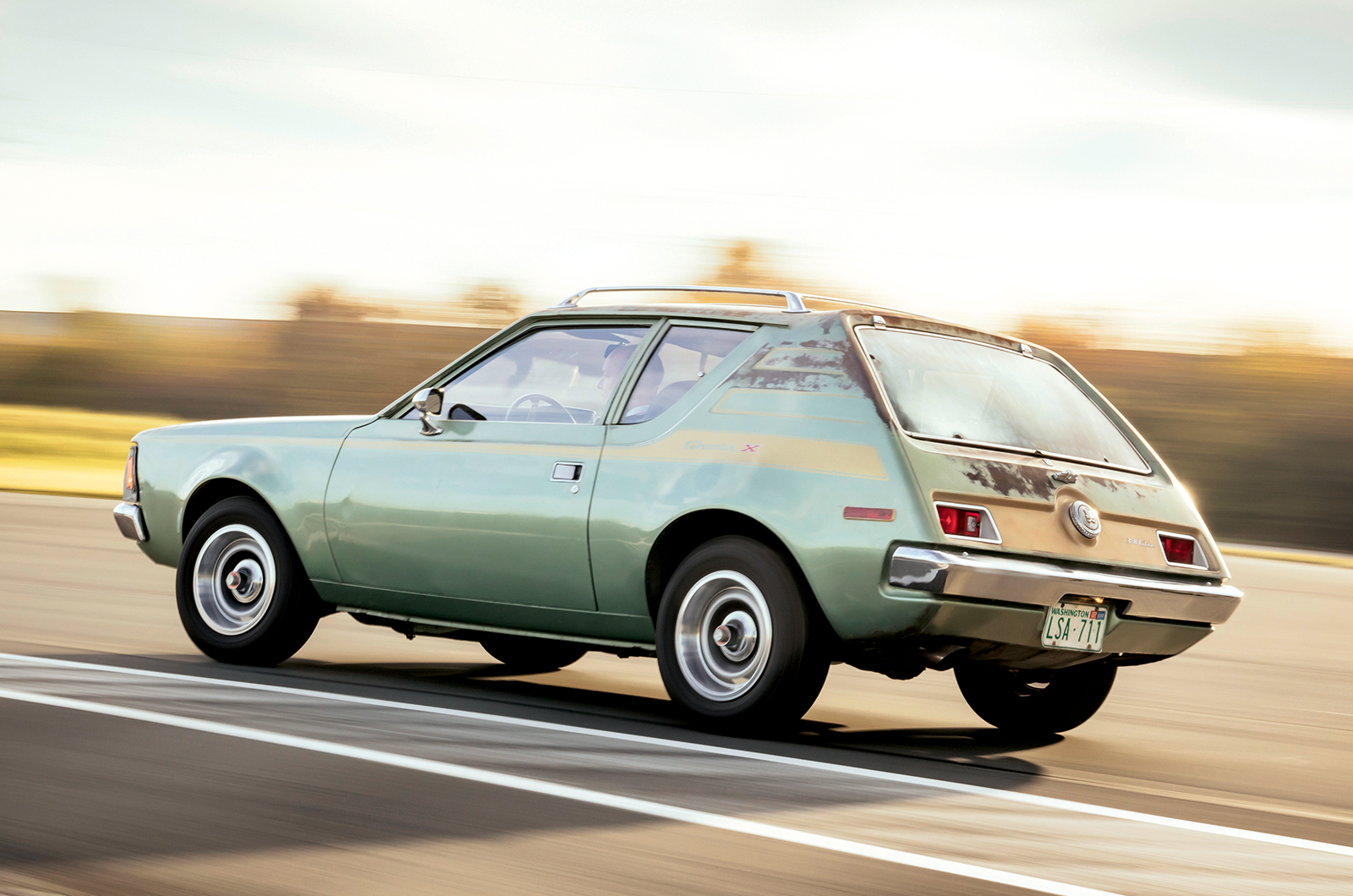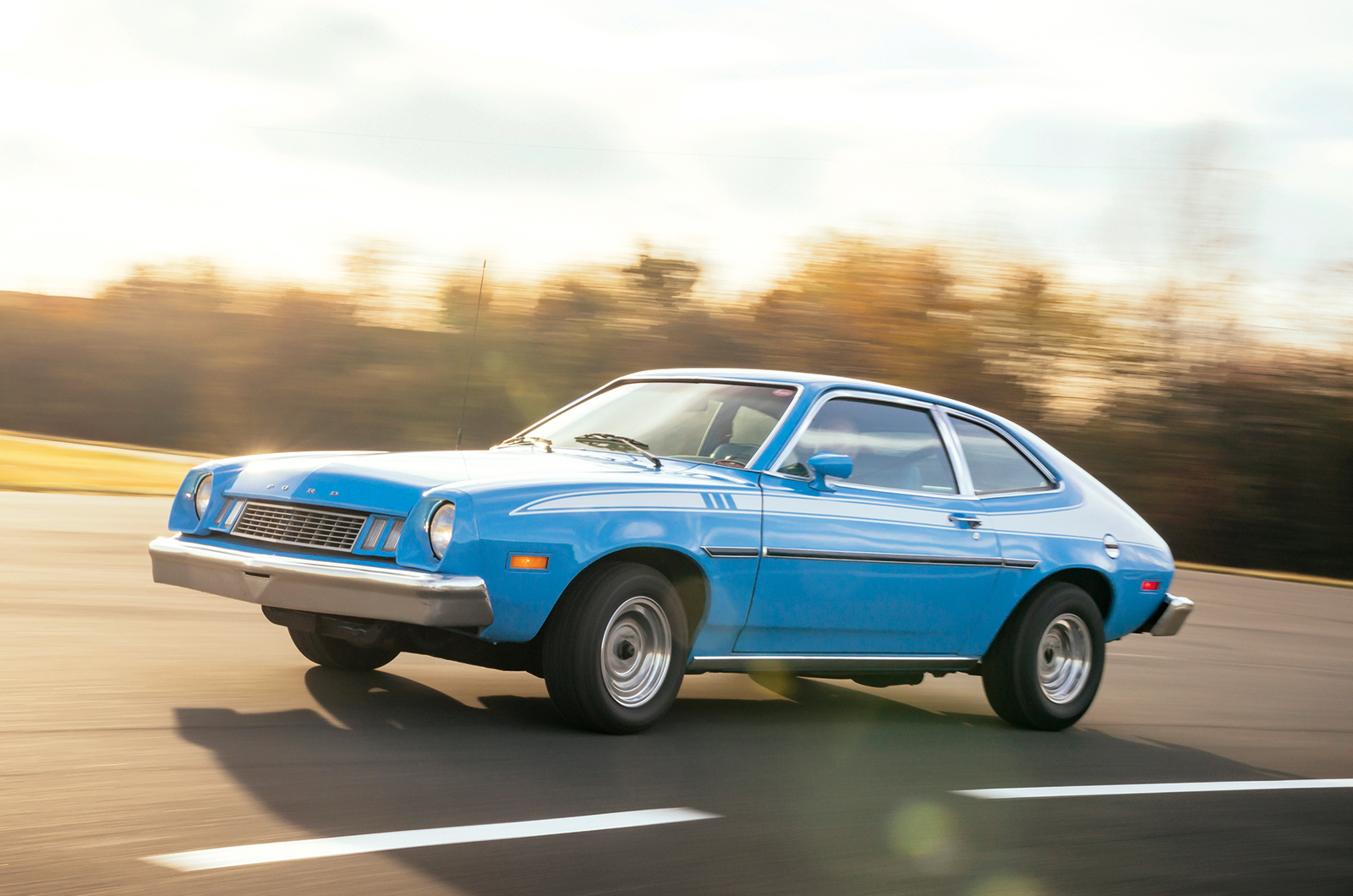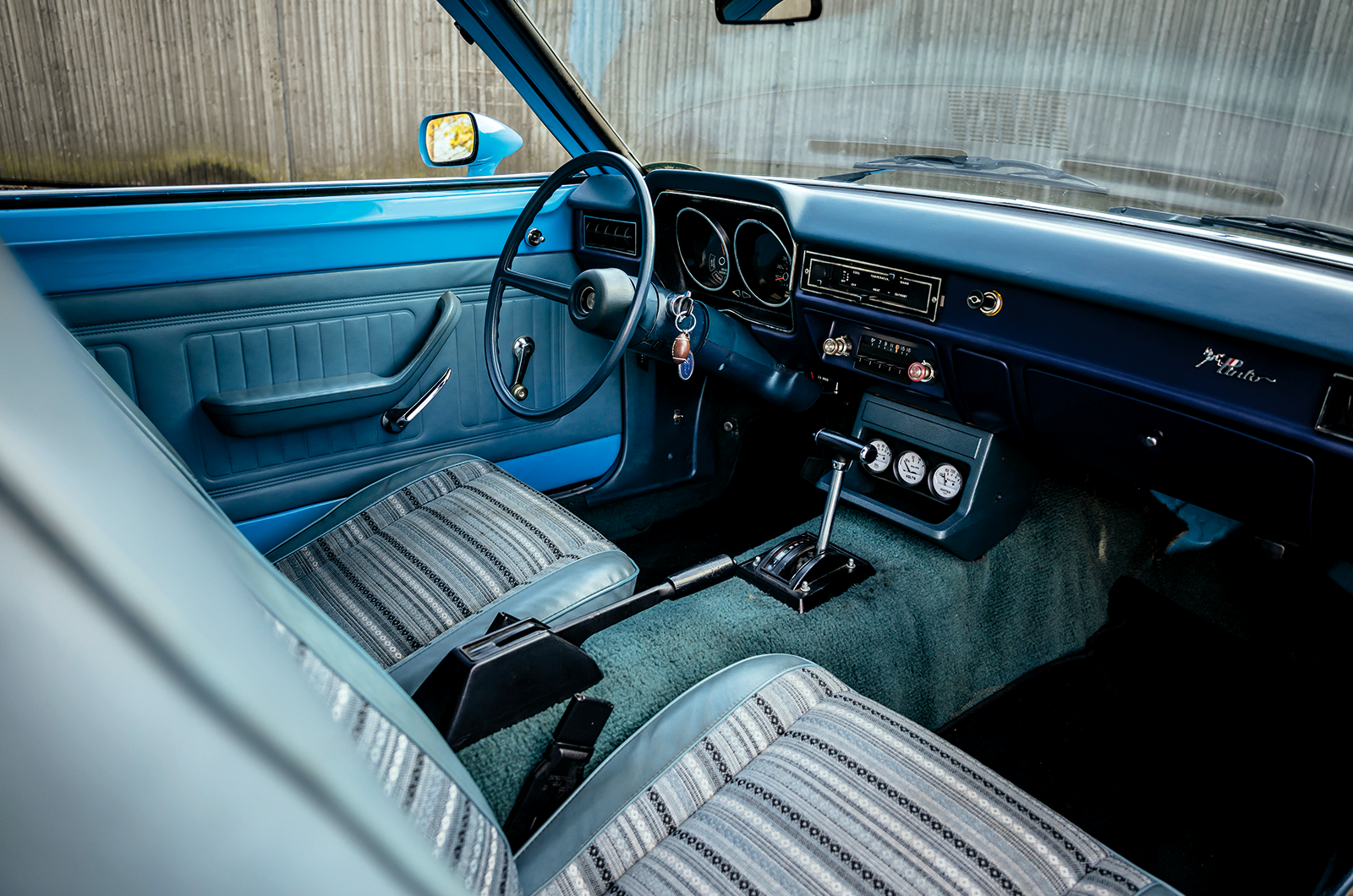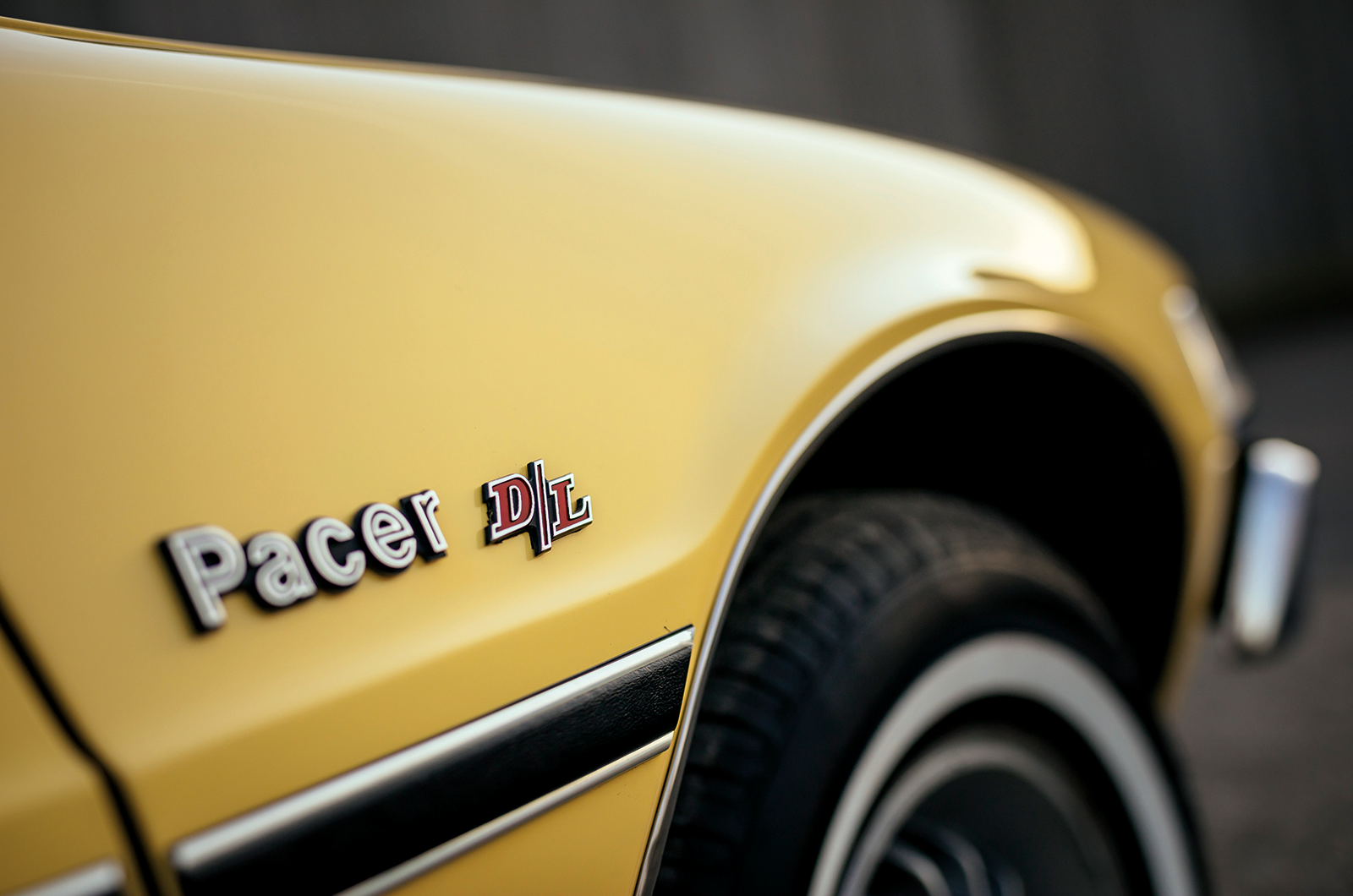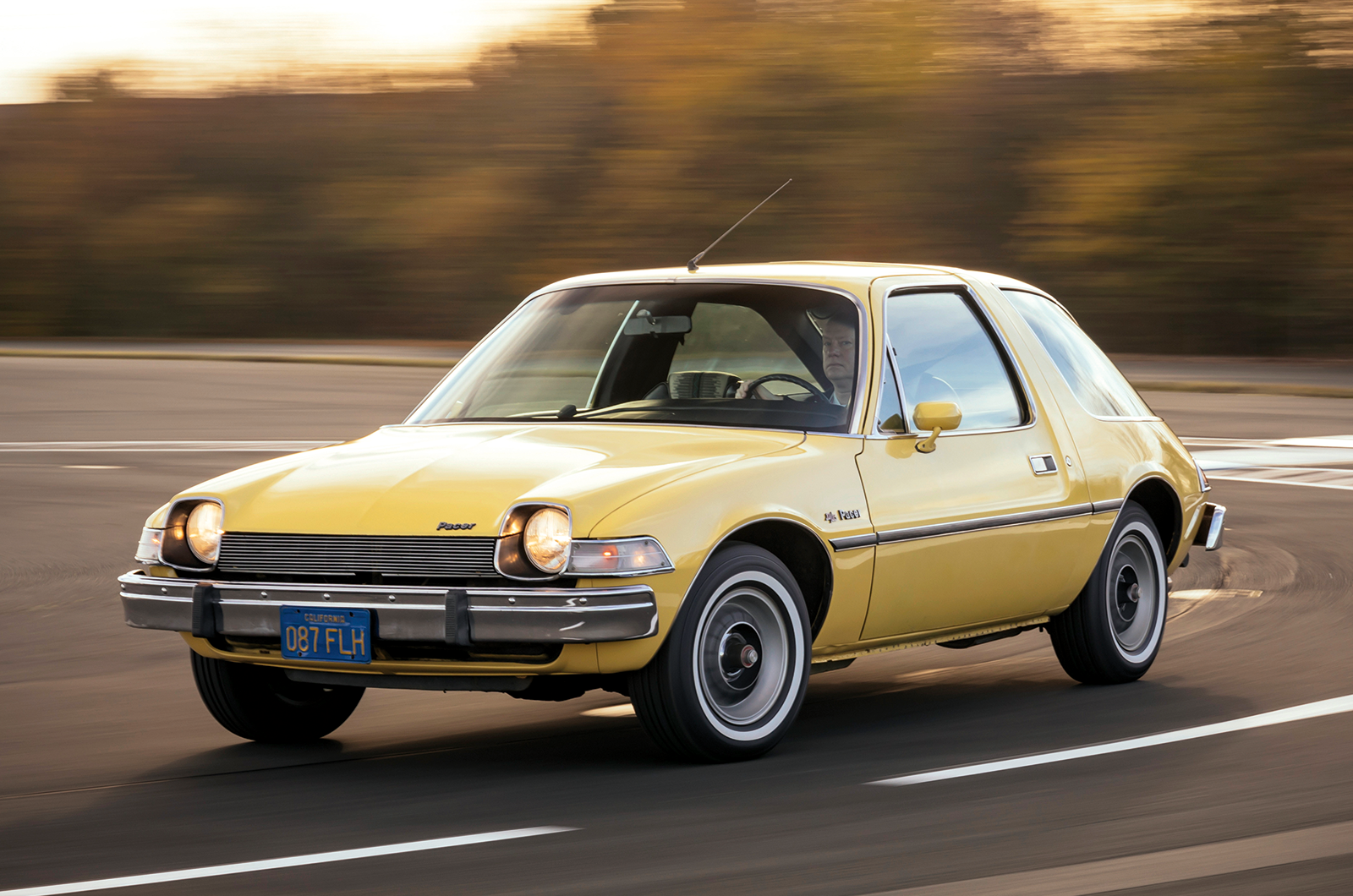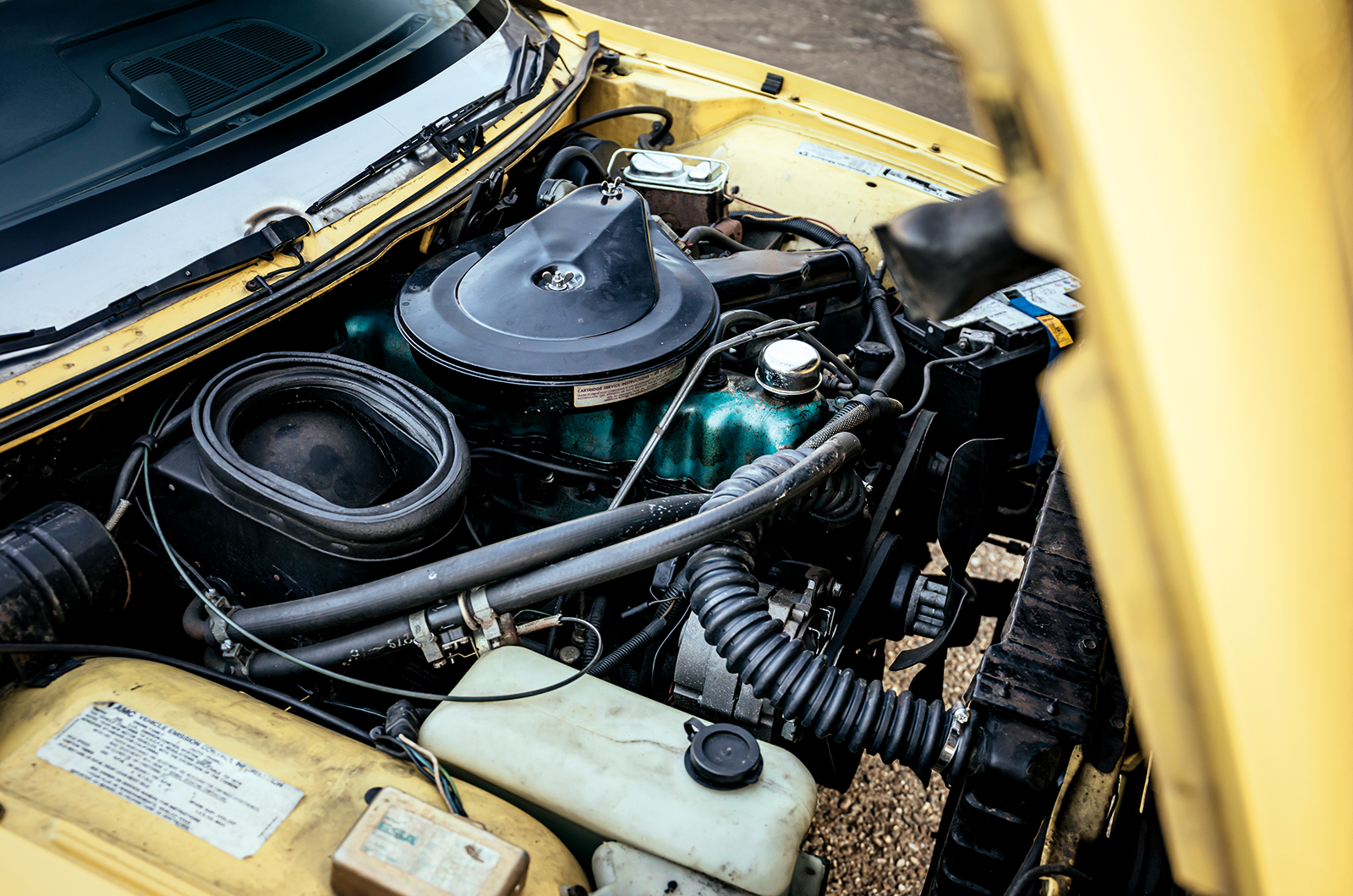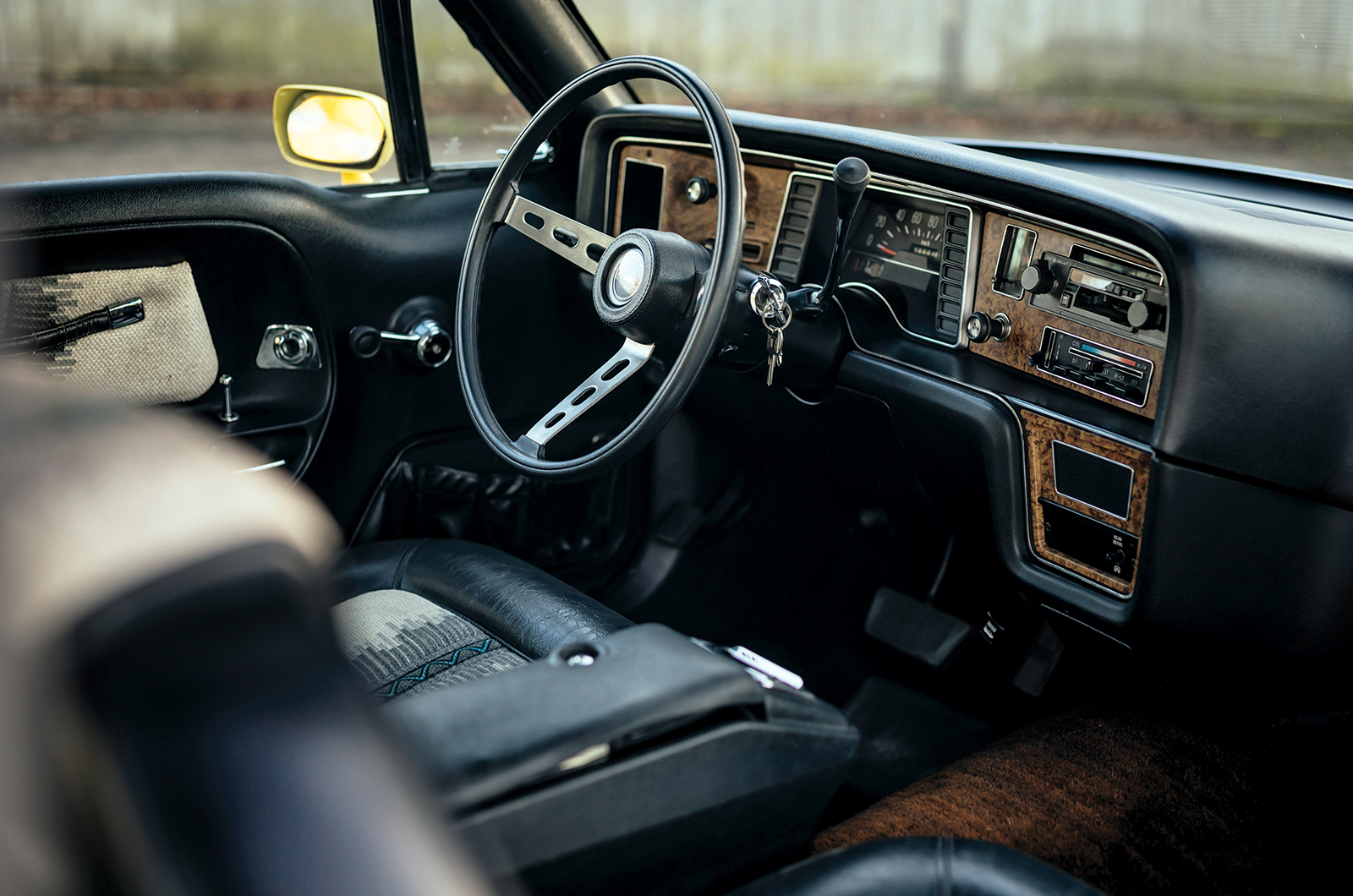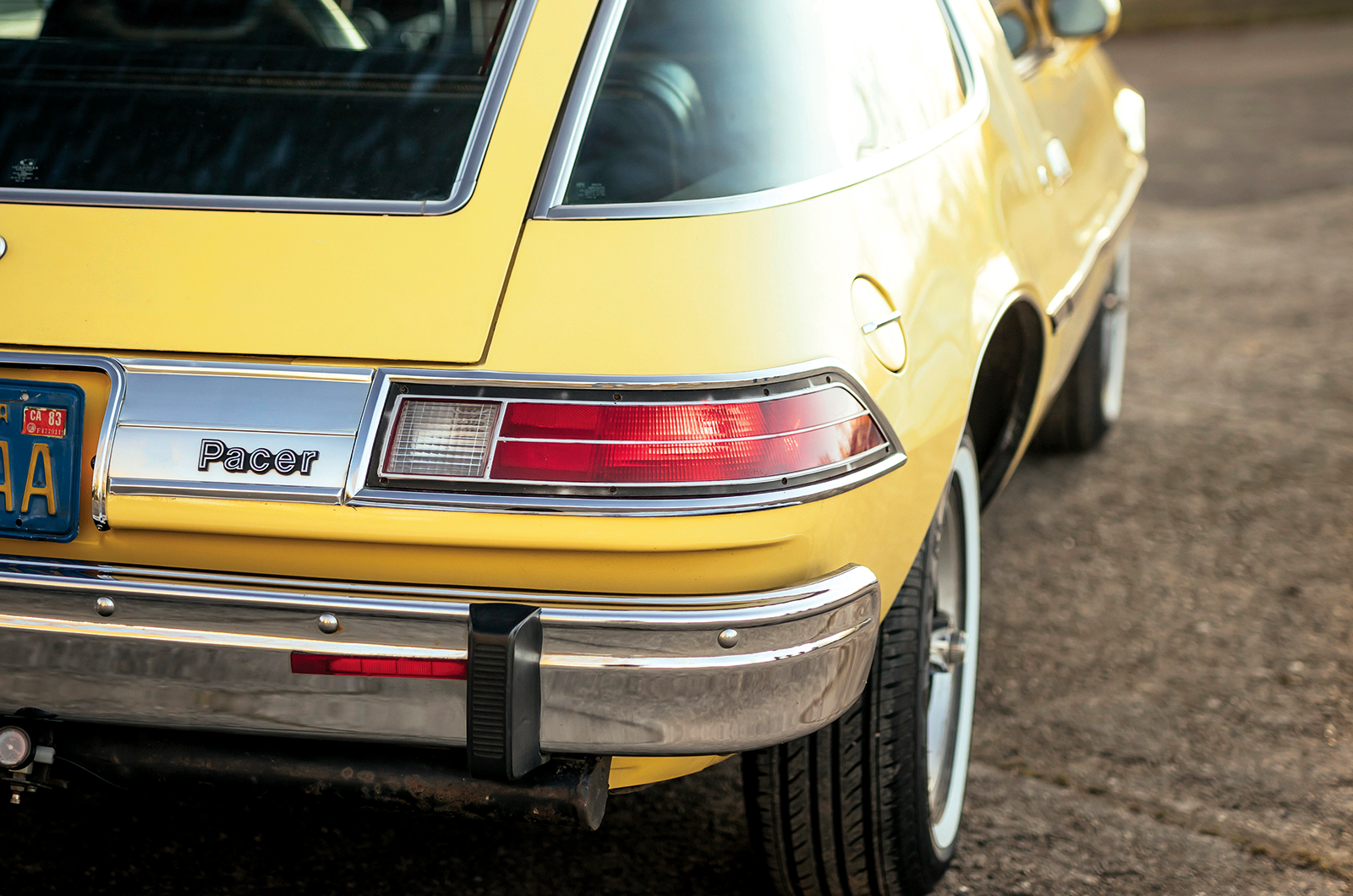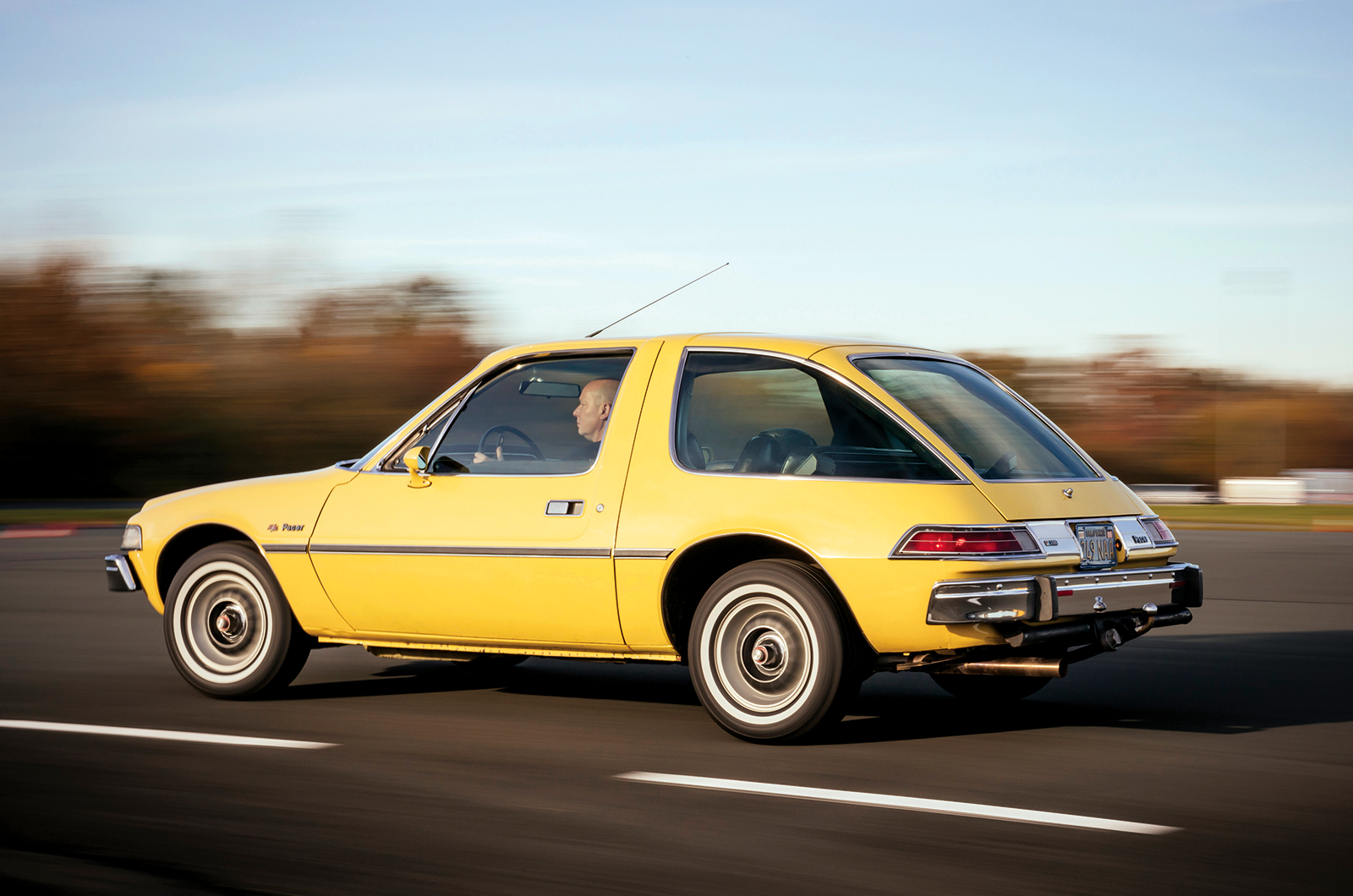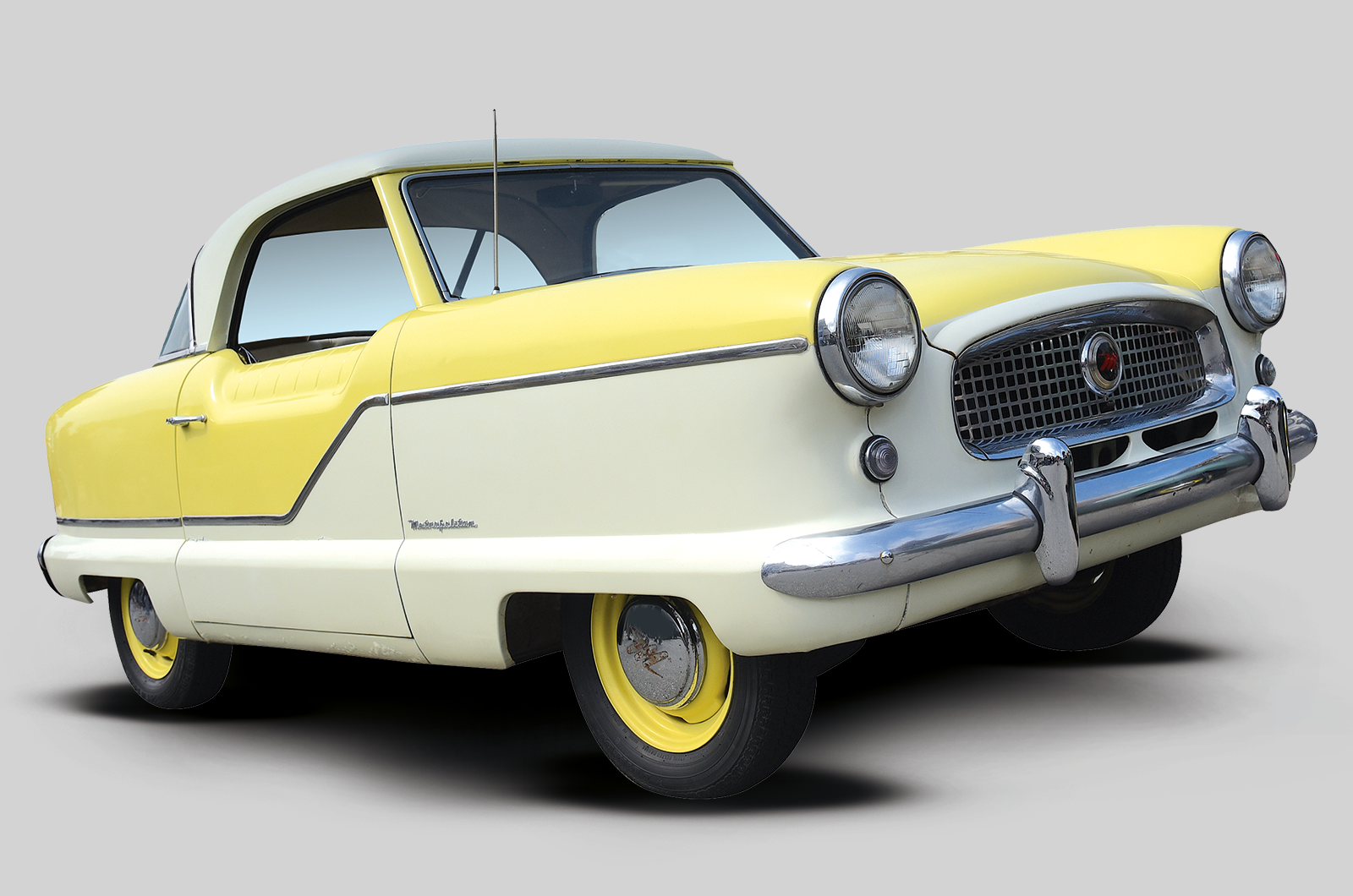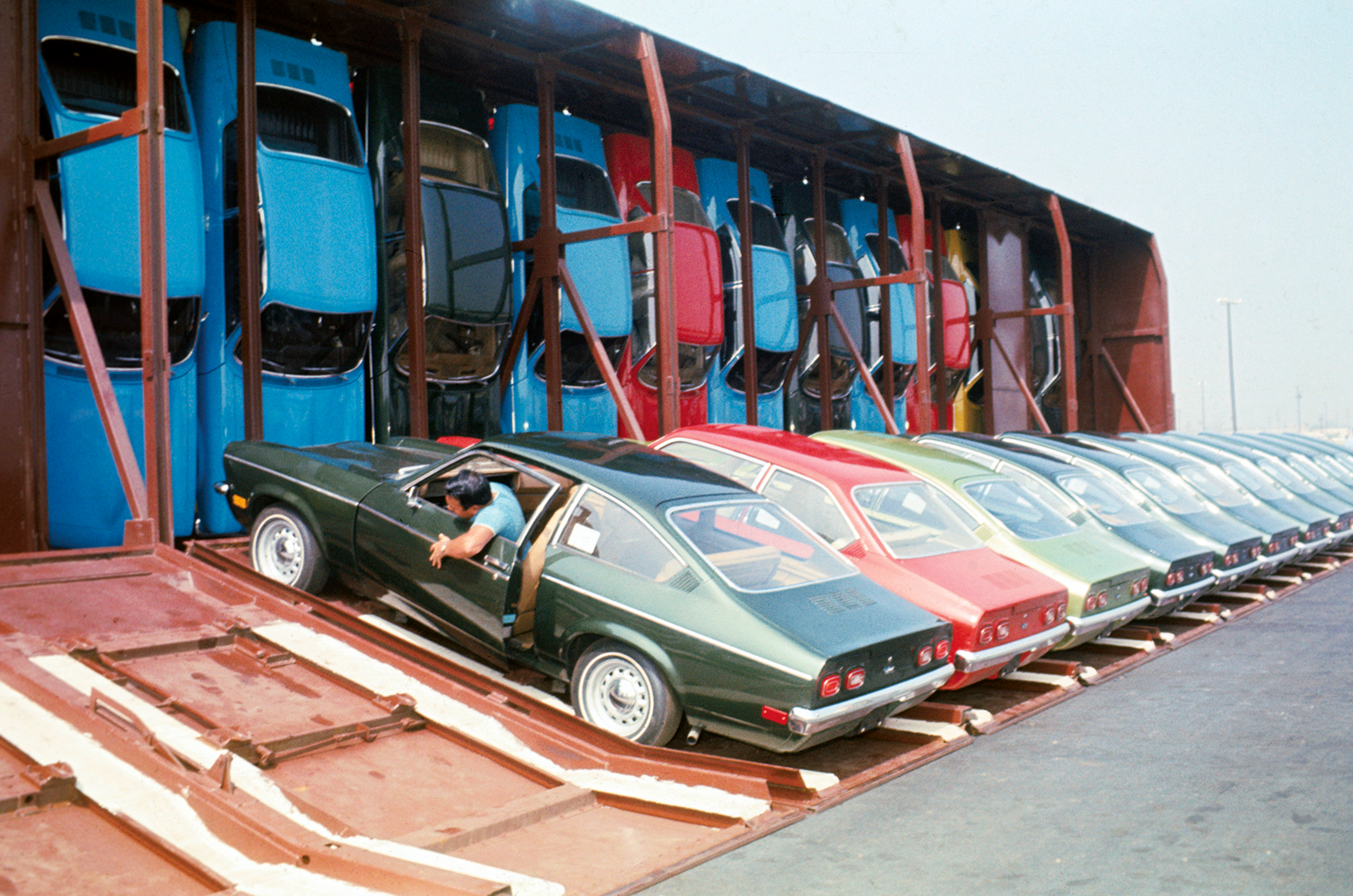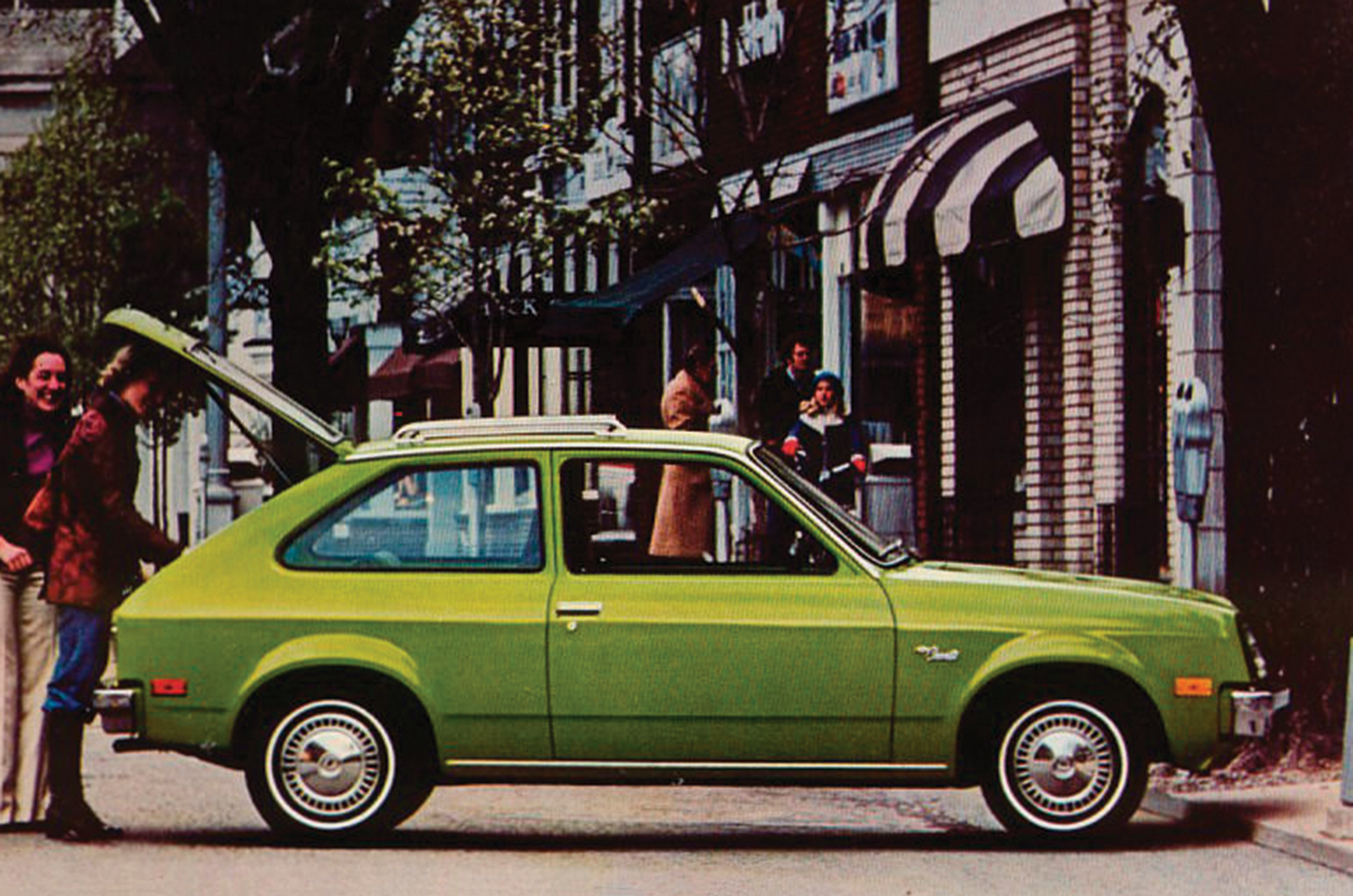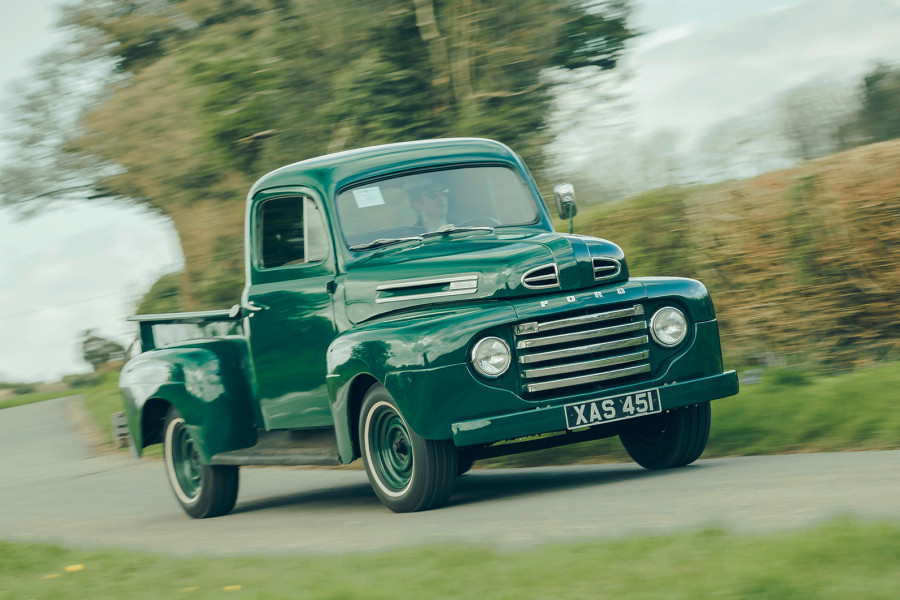Indeed, AMC advertised this daring newcomer as ‘the first small, wide car’, even if this unique selling point was really an emergency solution, like so many from the notoriously cash-strapped company in Kenosha, Wisconsin.
The AMC Pacer is a cut above its rivals in terms of cabin fit and finish
The ambitious Pacer project was originally conceived to be equipped with an advanced Wankel rotary engine and front-wheel drive.
For cost reasons, however, it came on to the market with the usual, venerable AMC straight-six – seemingly developed shortly after the discovery of America – or, from 1978, an optional V8; and always with rear-wheel drive.
The hulking, all-iron, 4.2-litre engine was generally considered to be the ideal choice in the Pacer – even if, thanks to ever-changing emissions regulations, the large in-line ‘six’ of this 1976 example actually makes a few horsepower less than the 3.8-litre version in the Gremlin.
Both consumed a similar amount of fuel and were capable of interstellar mileages with minimal maintenance.
The AMC Pacer’s distinctive rear
Ideally, the Pacer would prefer the majority of those miles to be running in a straight line, because cornering is very much not its forte.
That said, this is a comfortable car – in the front, at least – and as stylish on the inside as it is wacky from without.
The passenger-side door is 4in longer than the driver’s side, for rear-seat passengers to get in and out at the kerb rather than into the road – less useful in cars converted to right-hand drive and sold by Rambler Motors in the UK.
Finished in the warm, pudding-like colour of Sunshine Yellow, ‘our’ Pacer boasts more generous D/L (De Luxe) specification, which brings cruise control, imitation wood and chrome on the broad dashboard, plus psychedelic seat covers with a basket-weave design.
Cornering is not the AMC Pacer’s forte
Pricier when new than either the Gremlin or the Pinto, the Pacer feels at least one class above in terms of interior ambience, with improved materials and more space.
From inside, the world rushes past the large windows in CinemaScope format.
While the Pacer lacked the sales success of the Gremlin and in particular the Pinto, its ‘so bad it’s good’ reputation earned it cult status – particularly after its starring role in the generational teen film Wayne’s World.
Today it’s revered as a unique piece of automotive design, just like a certain European competitor that inspired America’s car makers to head down the compact route.
And, for all its conventional underpinnings, it serves as concrete proof that US manufacturers were willing to think outside the three-box after all.
Images: Roman Rätzke
Small cars mean big business
The Crosley Hotshot was America’s first post-war sports car
Once ridiculed, today the cars of the Crosley Corporation (1939-’52) are now collector’s items.
Powered by flat-twin and in-line four-cylinder engines, these ultra-frugal compacts concentrated on economy when everyone else in the USA was still focusing on launching ever-larger and more powerful machines.
The model range extended from the open Hotshot – America’s first post-war sports car (above) – to the tiny station wagon.
When the good times began to come around again as the world recovered from the conflict, the manufacturer closed.
The Nash Metropolitan has Austin underpinnings
Nash and Hudson, which went on to form the American Motors Corporation (AMC) in 1954, filled the gap with the Metropolitan (above).
This 3.8m-long compact was the first American car to be produced entirely abroad through a tie-up with Austin, which supplied the technology and took over the model’s production.
Around 95,000 units were built from 1953-’61.
Chevrolet Vega: a new compact from GM
The affordable Chevrolet Vega was a popular choice in the 1970s
Chevrolet’s answer to the economy-car question appeared shortly before its arch rival from Ford, in 1970.
Unlike General Motors’ first attempt at a compact car, the air-cooled, rear-engined Corvair of 1959, the Vega was a conventional design offered only in four-cylinder guises, with engine displacements from 2 to 2.3 litres.
The flagship was the Vega Cosworth, unveiled in 1975 with a 110bhp, twin-cam 2-litre engine.
Chevrolet’s ‘Vert-A-Pac’ system © Getty
To boost production and improve quality, GM built a highly automated factory specially for the Vega, including an innovative delivery system using ‘Vert-A-Pac’ railroad cars (above), yet the new model quickly made an unwanted name for itself with various defects.
Although voted Car of the Year by Motor Trend magazine in 1971, and selling some two million units by 1977, the Vega is a regular feature of ‘worst cars ever’ lists.
Europe comes to the rescue
Clockwise from top: Chevrolet Chevette; Plymouth Horizon; Dodge Omni
After trying to develop their own compact models, several major US manufacturers switched to knocked-down kits from the other side of the Atlantic in the late ’70s.
The Chevrolet Vega was succeeded by the more compact Chevette, based on GM’s worldwide ‘T platform’ that underpinned the Opel Kadett C, and by 1987 nearly 2.8 million Chevettes had been produced.
Chrysler, the smallest of America’s ‘Big Three’, secured the rights to the new Horizon hatchback after the sale of its Simca subsidiary and tweaked the design to suit the US market.
With a four-cylinder engine initially from Volkswagen (later Peugeot and Chrysler units), the Dodge Omni and Plymouth Horizon joined the Chrysler range from 1978-’90.
Factfiles
American Motors Gremlin X
- Sold/number built 1970-’83/671,475
- Construction steel monocoque
- Engine all-iron, ohv 3801cc ‘six’, single emissions-control Carter carburettor
- Max power 100bhp @ 3600rpm
- Max torque 185lb ft @ 1800rpm
- Transmission three-speed ‘Torque-Command’ Chrysler automatic, RWD
- Suspension: front independent, by double wishbones, coil springs, anti-roll bar rear live axle, semi-elliptic leaf springs; telescopic dampers f/r
- Steering power-assisted recirculating ball
- Brakes discs front, drums rear, with servo
- Length 13ft 5¼in (4096mm)
- Width 5ft 10½in (1793mm)
- Height 4ft 3¾in (1316mm)
- Wheelbase 8ft (2438mm)
- Weight 2601lb (1180kg)
- Mpg 20.5
- 0-60mph 13.1 secs
- Top speed 100mph
- Price new $2995 (1977)
- Price now £15-30,000*
Ford Pinto
- Sold/number built 1971-’80/3,173,491
- Construction steel monocoque
- Engine all-iron, ohv 2792cc V6, single two-barrel Motorcraft carburettor
- Max power 90bhp @ 4200rpm
- Max torque 143lb ft @ 2200rpm
- Transmission three-speed ‘Cruise-O-Matic’ automatic, RWD
- Suspension: front independent, by double wishbones, coil springs, anti-roll bar rear live axle, semi-elliptic leaf springs; telescopic dampers f/r
- Steering power-assisted rack and pinion
- Brakes discs front, drums rear, with servo
- Length 14ft 1¼in (4300mm)
- Width 5ft 9½in (1763mm)
- Height 4ft 2½in (1285mm)
- Wheelbase 7ft 10½in (2400mm)
- Weight 2551lb (1157kg)
- Mpg 19.5
- 0-60mph 13.3 secs
- Top speed 96mph
- Price new $1919 (1970)
- Price now £5-15,000*
American Motors Pacer D/L
- Sold/number built 1975-’80/280,858
- Construction steel monocoque
- Engine all-iron, ohv 4235cc straight-six, single Carter carburettor
- Max power 95bhp @ 3050rpm
- Max torque 180lb ft @ 2100rpm
- Transmission three-speed ‘Torque Command’ Chrysler automatic, RWD
- Suspension: front independent, by double wishbones, coil springs, anti-roll bar rear live axle, semi-elliptic leaf springs; telescopic dampers f/r
- Steering power-assisted rack and pinion
- Brakes discs front, drums rear, with servo
- Length 14ft 4in (4369mm)
- Width 6ft ¼in (1836mm)
- Height 4ft 9½in (1461mm)
- Wheelbase 8ft 5in (2565mm)
- Weight 3201lb (1452kg)
- Mpg 18.5
- 0-60mph 15.8 secs
- Top speed 100mph
- Price new $3500 (1975)
- Price now £10-20,000*
*Prices correct at date of original publication
Enjoy more of the world’s best classic car content every month when you subscribe to C&SC – get our latest deals here
READ MORE
Guilty pleasures: AMC Pacer
10 top luxury compacts
Volkswagen Beetle: Wolfsburg’s miracle car

